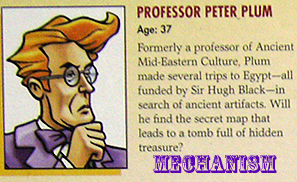A phosphate bufferof pH 8 (800 μL) was added to a stirring solution of PMB ether 25 (45.2 mg, 0.0397 mmol, 1 equiv) in CH2Cl2 (3.2 mL) at 0 ºC. One portion of DDQ (45 mg, 0.198 mmol, 5 equiv) was added and the reaction was vigorously stirred for 1.5 h. A mixture of CH2Cl2 and pH 4 acetate buffer (5 mL for both) was combined with the reaction mixture. These layers were then separated, and the aqueous layer was extracted with CH2Cl2. The remaining organic layers were dried over Na2SO4, filtered and concentrated. This product was passed through a silica gel column eluting with 30% EtOAc/hexanes, and collecting 4 mL fractions. Under pressure, the product found in fractions 8-19 was combined and concentrated to give the seco acid (partially mixed with DDQ byproducts).
Triethylamine (31 μL, 0.238 mmol, 6.0 equiv) and 2,4,6-trichlorobenzoyl chloride (18 μL, 0.119 mmol, 3.0 equiv) were added to a stirring solution of the seco acid in THF (1.3 mL) via syringe. The reaction mixture was warmed from 0ºC to room temperature after 10 minutes, and stirring was continued for 4 additional hours. The reaction mixture was then diluted with 3:1 toluene/THF (20 mL) and taken up into a 25 mL gas-tight syringe. This solution was added by syringe pump to a stirring solution of DMAP (97 mg, 0.795 mmol, 20.0 equiv) in toluene (39 mL) at 40 °C over 12 hours. 0.5 mL of toluene was used to rinse the residual contents of the syringe into the flask. Stirring was continued for 2 additional hours. The reaction mixture was then cooled to room temperature, diluted with 30% EtOAc/hexanes (30 mL), and washed with saturated aqueous NaHCO3 solution (10 mL) and with brine (10 mL). The remaining organic layer was dried over Na2SO4, filtered, and concentrated under reduced pressure. Flash column chromatographywas used to purify the compound, using a 1 x 8 cm silica gel column, and eluting with 20% EtOAc/hexanes. Fractions were collected in 4 mL segments. The product found in fractions 5-12 was combined and concentrated under reduced pressure to give macrolactone 26, which appears as a white foam (28 mg, 71% over 2 steps).
500 MHz H NMR (CDCl3) δ 7.37-7.31 (m, 5H), 6.27 (d, J = 15.6 Hz, 1H), 5.95 (d, J = 1.9 Hz, 1H), 5.65 (dd, J = 10.2, 4.8 Hz, 1H), 5.33 (dd, J = 16.1, 8.3 Hz, 1H), 5.20 (dd, J = 11.7, 4.8 Hz, 1H), 5.18 (s, 1H), 4.85 (d, J = 6.8 Hz, 1H), 4.83 (d, J = 6.8 Hz, 1H), 4.72-4.71 (m, 2H), 4.67 (s, 2H), 4.45 (ddd, J = 12.8, 9.4, 4.0 Hz, 1H), 3.99 (ddd, J = 10.5, 7.8, 2.1 Hz, 1H), 3.85 (dd, J = 5.8, 4.8 Hz, 2H), 3.78-3.73 (m, 2H), 3.69 (s, 3H), 3.11 (s, 3H), 3.10 (s, 3H), 2.63 (dd, J = 17.5, 3.4 Hz, 1H), 2.19 (dd, J = 17.5, 9.2 Hz, 2H), 2.18-2.08 (m, 4H), 2.06 (s, 3H), 2.02 (s, 3H), 1.87-1.82 (m, 1H), 1.69-1.61 (m, 4H), 1.28-1.18 (m, 7H), 1.10 (s, 3H), 1.08 (s, 3H), 0.94 (t, J = 6.8 Hz, 9H), 0.90-0.87 (m, 1H), 0.85 (s, 3H), 0.58 (dq, J = 7.3, 1.9 Hz, 6H)










